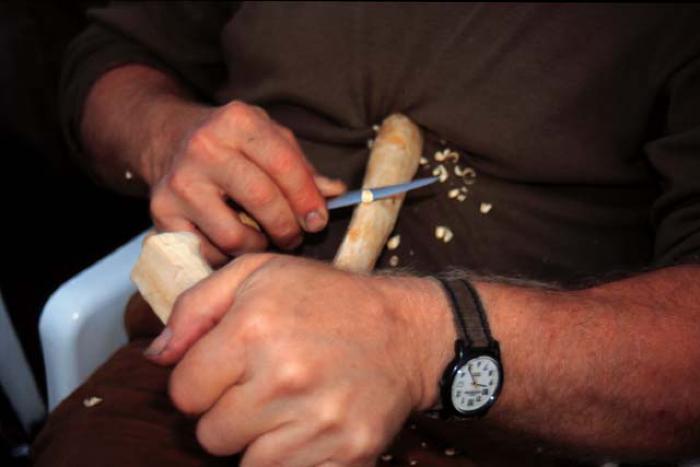Carve It — K’ligluku

Carving was once a daily act in Alutiiq communities. Native craftsmen made weapons: shafts, arrows, and harpoons, split timbers to build houses and boats, and chiseled images into wood. Through woodworking, Alutiiq people produced many of the tools essential for daily life and recorded their beliefs in masks, amulets, and figurines.
Archaeological finds reveal traditional carving techniques. Woodworkers split driftwood logs open with the help of resilient bone and wooden wedges, pounded with weighty granite mauls lashed to sturdy wooden handles. The resulting planks were cut to length and shaped with a variety of stone adzes tied to handles made of flexible alder branches. Hand-held carving implements, particularly rodent incisors hafted in the sides of small wooden handles, were used for finer carving. The narrow bits of these tools left gouges that artists sanded away with gritty abraders of pumice and sandstone. Finishing touches were applied with a burnishing stone, a water-worn pebble rubbed over the carving to create a polished, splinter-free surface.
Today artists search Kodiak’s forests and commercial lumber yards for the perfect grain, but in the old days, before spruce trees colonized Kodiak, craftsmen collected most wood from the beach. Carvers gathered Pacific yew, cedar, and spruce from Kodiak’s shores and collected alder and cottonwood.
In addition to wood, carvers collected feathers, fur, animal hair, and pigments to enhance their carvings. Decoration is an essential part of all Alutiiq arts, as finely made objects show respect for the spirit world.
